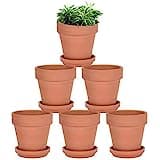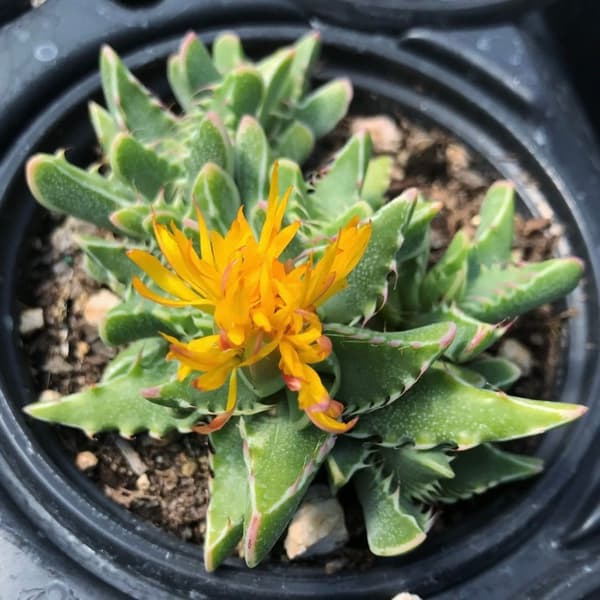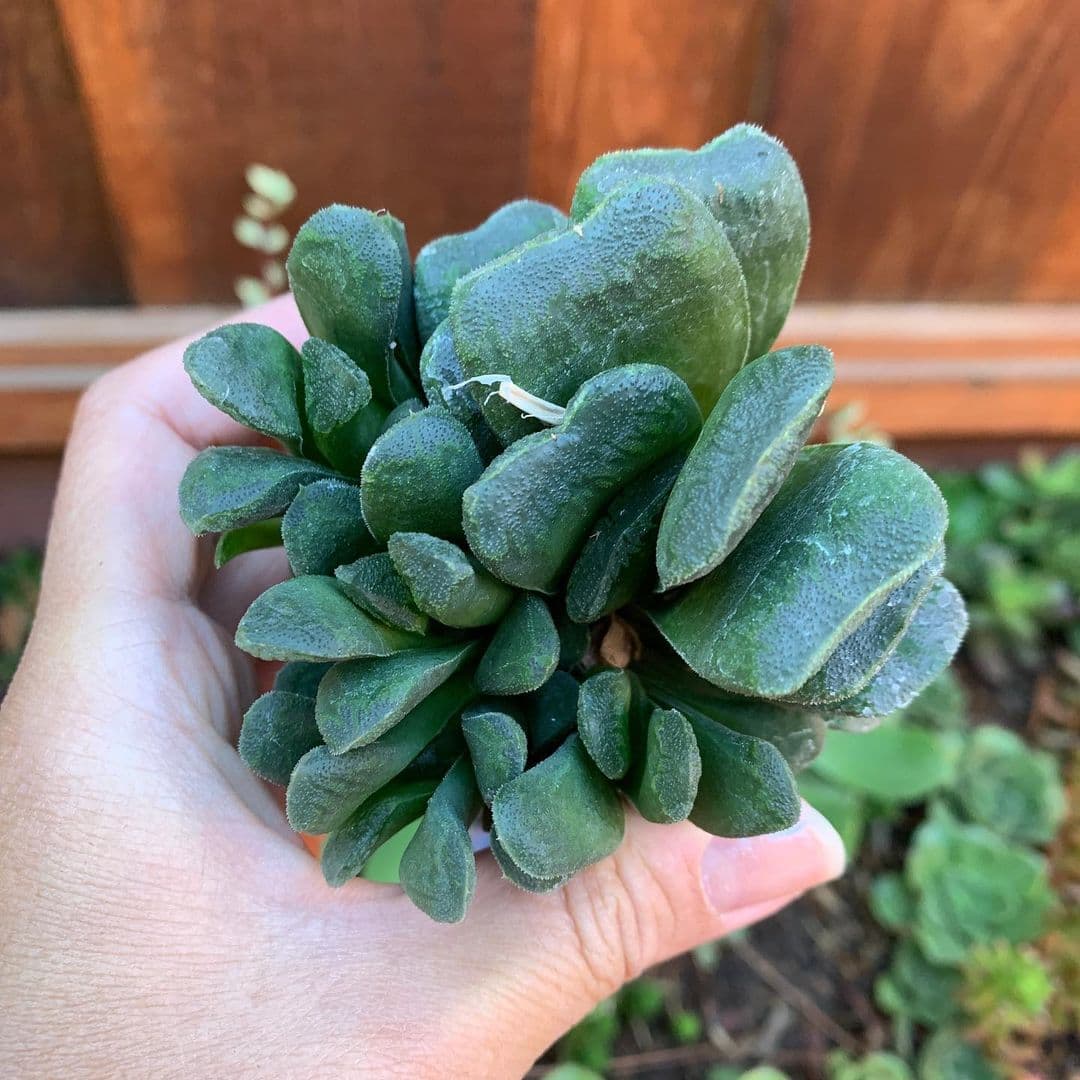Kalanchoe Daigremontiana "Mother of Thousands Plant"
Posted by Grace on August 22, 2023
 Kalanchoe Daigremontiana
Kalanchoe Daigremontiana
Quick Facts
- Native Habitat: Madagascar 🇲🇬
- Family: Crassulaceae
- Water: Low to moderate
- Sunlight: Bright, indirect light
- Soil: Well-draining cactus/succulent mix
- Interesting Facts: Kalanchoe Daigremontiana produces plantlets along the edges of its leaves, which drop off and root, allowing it to easily propagate.
Contents
Why it is called Kalanchoe Daigremontiana?
The name Kalanchoe daigremontiana might sound complex, but it actually has a simple explanation. The generic name, Kalanchoe, is derived from the Chinese words "Kalan Chauhuy (落地生根)", which translates to "that which falls and grows"。
The specific epithet, daigremontiana, pays homage to the French botanist Joseph Daigremont. This name hints at the plant's incredible ability to propagate through a fascinating mechanism, which we'll explore later.
Kalanchoe Daigremontiana nowadays is also commonly known as Alligator Plant, Devil's Backbone, or Mexican Hat Plant.
The Appearance of Kalanchoe Daigremontiana
Leaves
The most distinctive feature of Kalanchoe daigremontiana is its unique leaf structure. The leaves are paddle-shaped and grow in a rosette formation. What sets them apart is the presence of tiny plantlets along the edges, resembling miniature plants themselves. These plantlets are the key to the plant's remarkable reproductive strategy.
Note: Kalanchoe daigremontiana is often confused with Kalanchoe laetivirens, Kalanchoe delagoensis, and Kalanchoe × houghtonii. Kalanchoe laetivirens has fully green leaves, while Kalanchoe daigremontiana features spots or bands on the back of its leaves. The leaves of Kalanchoe delagoensis are narrow and linear, in contrast to the broader, triangular or lance-shaped leaves of Kalanchoe daigremontiana. Kalanchoe × houghtonii, a hybrid of the two, exhibits intermediate traits, with narrower leaves and a leaf base that is more tapered or weakly cordate, while Kalanchoe daigremontiana has distinctly cordate or even peltate leaf bases.
 Leaves of Kalanchoe Daigremontiana
Leaves of Kalanchoe Daigremontiana
Flowers
Kalanchoe daigremontiana produces an umbrella-like terminal inflorescence (a compound cyme) of small, bell-shaped flowers that are typically grayish-pink, though they may occasionally be orange. Flowering is not an annual occurrence and happens sporadically, with some shoots never flowering at all.
In climates with distinct seasonal temperature changes, flowering is most commonly seen at the onset of the warm season. Indoor plants, as well as those brought indoors from balconies to survive the cold season, often begin flowering in early winter.
 Flowers of Kalanchoe Daigremontiana
Flowers of Kalanchoe Daigremontiana
Fragrance
Kalanchoe Daigremontiana is not known for its fragrance.
Toxicity
All parts of this Crassulaceae family contain a very toxic steroid known as daigremontianin. These substances are linked to around 33% of cattle deaths caused by eating poisonous plants in South Africa. These compounds can harm the heart and cause problems. If animals, like sheep in the Karoo area of South Africa, repeatedly eat small amounts of these substances, they can suffer from a condition called cotyledonosis. This affects their nervous and muscular systems, making them sick.
For Humans
Yes, Kalanchoe Daigremontiana can be poisonous to humans for the above reason.
The 'poison' content can vary in different amounts, which depend on where the plant grows, how much water it gets, the time of year, and the specific characteristics of each plant. If there's too much daigremontianin, it can harm the heart and kidneys, causing them to fail. Moreover, even using a little bit of it for a long time can result in ongoing problems.
It's essential to exercise caution when handling Kalanchoe daigremontiana.
For Animals
Yes, Kalanchoe Daigremontiana can be poisonous to animals for the above reason.
Pet owners should be aware that Kalanchoe daigremontiana can be harmful to cats, dogs, and other animals if ingested. If you suspect your pet has consumed any part of the plant, seek veterinary attention promptly.
Care for Kalanchoe Daigremontiana
Caring for Kalanchoe daigremontiana doesn't require a green thumb, but it does involve providing the right conditions for it to thrive.
Light
Place your plant in bright, indirect sunlight. Avoid harsh midday sun, as it can scorch the leaves.
Watering
Allow the soil to dry out between waterings. Overwatering can lead to root rot, so it's best to water sparingly.
Soil
Kalanchoe daigremontiana thrives in rocky, arid environments where the soil is well-draining and dry.
Plant your Kalanchoe daigremontiana in a well-draining cactus or succulent mix to prevent waterlogged roots.
 Kalanchoe daigremontiana thrives in rocky, arid environments.
Kalanchoe daigremontiana thrives in rocky, arid environments.
Temperature
This succulent prefers moderate temperatures. Protect it from frost and extreme heat.
Humidity
Low to moderate humidity levels are suitable for Kalanchoe daigremontiana. It's well-adapted to arid conditions.
Fertilizing
Feed your plant with a diluted, balanced liquid fertilizer during the growing season.
Pruning
Prune away dead or wilted leaves to maintain the plant's appearance and health.
Repotting
Repot your Kalanchoe daigremontiana every couple of years or when it outgrows its container.
Dormancy
The plant may experience a period of dormancy during the winter. Reduce watering and avoid fertilizing during this time.
Pests and Diseases
Keep an eye out for common succulent pests like mealybugs or aphids. Use appropriate measures to address these issues promptly.
How to Propagate Kalanchoe Daigremontiana
Kalanchoe daigremontiana can spread by both 1) seeds and by 2) plantlets dropped from its leaves.
The plantlets that grow along the edges of its leaves eventually fall off and take root wherever they land. This is how the plant earned its nickname, the Mother of Thousands.
To propagate, simply place the fallen plantlets on well-draining soil, mist occasionally, and watch as new plants take root and flourish.
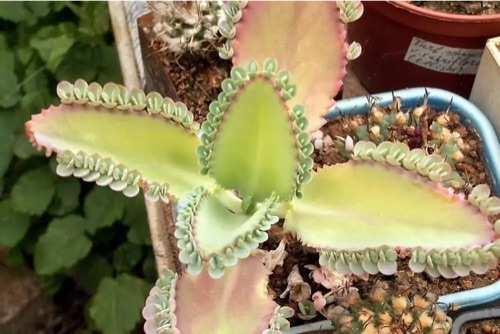 Propagation for Kalanchoe Daigremontiana
Propagation for Kalanchoe Daigremontiana
Common Problems of Kalanchoe Daigremontiana
Overwatering
This can lead to root rot. Always let the soil dry out between waterings.
Lack of Light
Insufficient light can cause the plant to become leggy or lose its vibrant color.
Pest Infestations
Keep an eye out for pests and address them promptly to prevent damage.
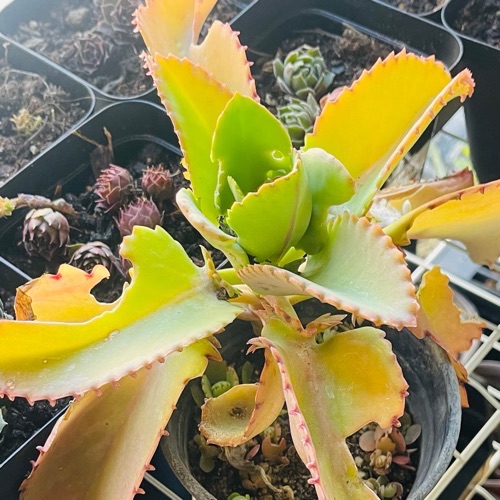 Leaves of Kalanchoe Daigremontiana damaged by pests
Leaves of Kalanchoe Daigremontiana damaged by pests
Where to Find Kalanchoe Daigremontiana?
You can find Kalanchoe daigremontiana at many nurseries, garden centers, and online plant shops. Its unique appearance and captivating reproductive strategy make it a popular choice among succulent enthusiasts.
Other Interesting Things about Kalanchoe Daigremontiana
Potential Medical Use
A chemical compound in this plant has caught the attention of scientists. It's called bufadienolide, named after the toad genus Bufo, where it was initially discovered. In specific situations, certain types of bufadienolides have displayed potential anti-tumor effects in tests done both in laboratories and in living organisms (source).
It's important to note that the in-vivo tests have been carried out on mice so far, but the outcomes are truly encouraging.


